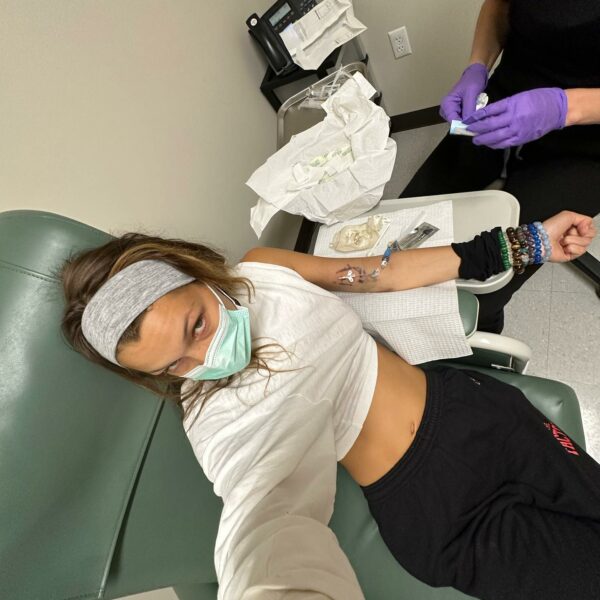Here at Poosh, we’ve been into myofascial release lately. It can help with so many things, like neck and jaw discomfort, stress, stiffness, and soreness.
After our wellness editor started doing self-myofascial release at home, she noticed her face seemed to become more symmetrical. To find out if this was just wishful thinking or a real thing, we turned to Kayla Hamm, a doctor of physical therapy.
And not to bury the lede, the answer is yes, it can. Here’s why:
“To explain fascia simply, it is a viscoelastic tissue, which means it has the ability to adapt through its inherent fluidity and elasticity. Fascia consists mostly of collagen, hyaluronan for lubrication, and numerous cells that have the ability to change shape in response to different stimuli,” Kayla tells us. “Superficial fascia is located just below the skin, and deep fascia covers muscles, bones, blood vessels, and nerves. With the specific, repetitive force used in myofascial work, we can cause gradual adaptations in our face.
“Myofascial release is a great tool to help improve symmetry in the face. It works by addressing fascial restrictions (areas of tension) and promoting relaxation of overly active muscular tissue,” Kayla explains. “Imbalanced musculature can result from many things, such as chewing on one side of the mouth more than the other, repetitive facial expressions (e.g. squinting or raising an eyebrow), and our favorite sleep position.”
Below, she shares a few exercises to support facial symmetry:
Temporalis Release
“The temporalis muscle is located on the sides of your head in the temple area. It’s primarily used for chewing, so you can feel it contract when you clench your jaw,” Kayla says.
1. Press your fingers into the top outer edge of your cheekbone, just above your ears.
2. Glide your fingers up along your temples, maintaining a firm, but gentle, pressure. Be sure to take your time and note any tight or tender areas.
3. You can add a light stretch by slowly opening your mouth while gliding your fingers up against the tension.
Repeat this three to five times.
Masseter Release
“The masseter is a large muscle located on both sides of the face where the upper and lower jaws join together,” Kayla explains.
1. Place your fingers at the base of your jaw, just below your ear.
2. Press until slight resistance is felt, and glide your fingers up towards the cheekbone.
3. You can add a light stretch to this as well by partially opening your jaw as you move your fingers up.
Repeat this three to five times.
How often should we do these exercises?
“Myofascial work can be done as part of your daily self-care routine. You will notice improvement in mobility, facial tension, and muscle suppleness very quickly,” Kayla says.
However, if you notice increased soreness in the treated areas, she suggests waiting a couple of days to recover before trying the exercises again. “As mentioned above, the key is to avoid any pain when performing these techniques,” she says. “Take your time and keep it gentle!”
The content provided in this article is provided for information purposes only and is not a substitute for professional advice and consultation, including professional medical advice and consultation; it is provided with the understanding that Poosh, LLC (“Poosh”) is not engaged in the provision or rendering of medical advice or services. The opinions and content included in the article are the views of the interviewee only, and Poosh does not endorse or recommend any such content or information, or any product or service mentioned in the article. You understand and agree that Poosh shall not be liable for any claim, loss, or damage arising out of the use of, or reliance upon any content or information in the article.








































